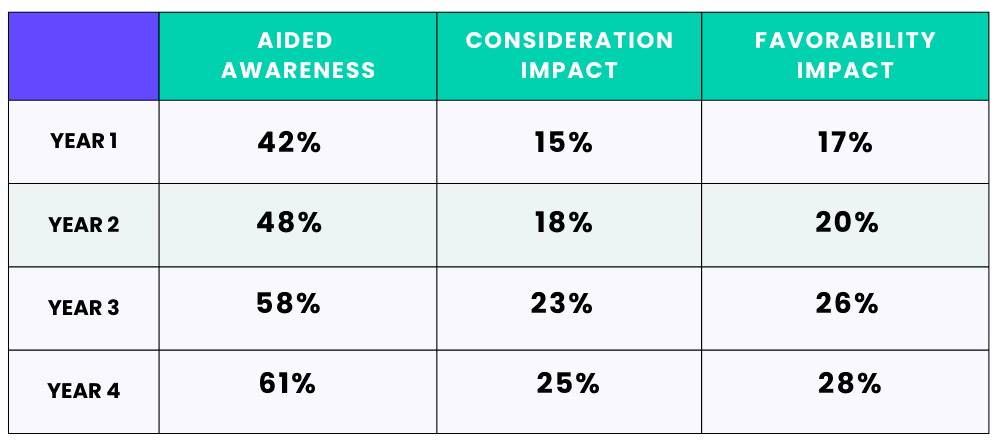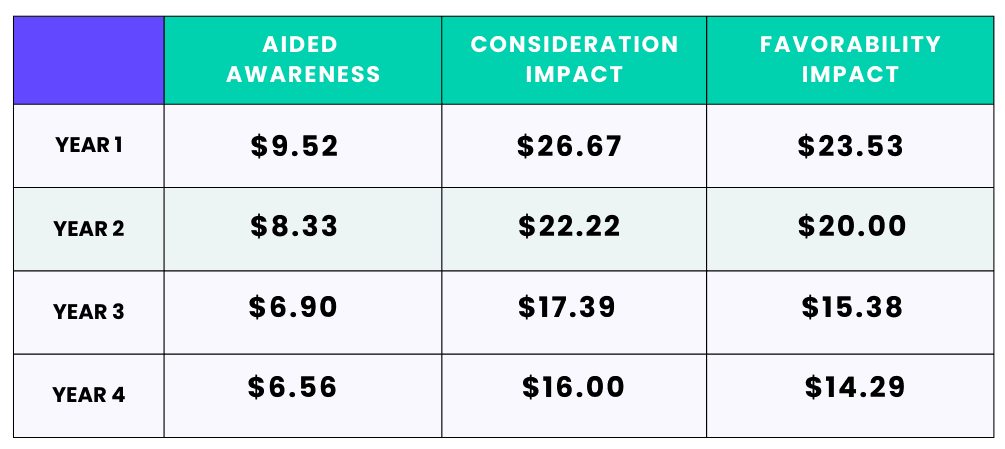Stop Expecting Instant ROI: Why Multi-Year Partnership Deals Deliver Amplified Performance

Sponsorship marketing is one of the most powerful ways to connect with fans, but it rarely delivers its full value in year one. Just like building a relationship, it takes time to establish trust, consistency, and impact. Short-term sponsorships rarely deliver the depth of engagement or return that builds over time.
In the first year, brands and properties are focused on building awareness, activating the partnership, and testing what resonates. By the second year, learnings are applied - creative is refined, activations become more targeted, and internal teams begin to align around the sponsorship’s role in the broader marketing mix. By the third year, the sponsorship has equity: fans recognize the brand’s presence, the association feels authentic, and measurable business impact begins to compound. This maturation curve is why consistent, multi-year investments are critical.
The Data Behind the Three-Year Curve
Research from SponsorPulse shows that sponsorships typically take three years to hit their stride—when awareness, consideration, and favorability meaningfully accelerate, and when cost-effectiveness improves alongside performance.
1. Trended Sponsorship Performance
Sponsorship growth compounds over time. Year one builds a foundation; years two and three layer in optimization and broader fan impact.

By year three, sponsorship awareness jumps to nearly 60%, with favorability and consideration both showing double-digit growth versus year one.
2. Trended Sponsorship Cost Effectiveness
Not only does performance improve over time, but cost efficiency strengthens as well. Brands spend less per fan reached and impacted in years three and four.

By year three, the cost to impact consideration is cut by more than a third compared to year one.
3. Trended Audience Engagement
Early sponsorship gains often come from existing brand loyalists. As partnerships mature, they begin to impact broader audiences—including non-users, where the greatest growth potential lies.
Awareness
Year 1: Users 57% | Non-Users 31%
Year 3: Users 64% | Non-Users 45% ⬆
Consideration
Year 1: Users 22% | Non-Users 11%
Year 3: Users 28% | Non-Users 19% ⬆
By year three, the sponsorship is no longer just reinforcing existing relationships—it’s expanding reach into new, incremental audiences.
Why Three Years Matter: Five Key Reasons
Strategic Mindset Shift – Teams stop treating sponsorships as one-off buys and start managing them as brand-building platforms.
Audience Expansion – Year one mostly resonates with loyalists; it takes multiple cycles to reach and convert new fans.
Optimization Cycle – The first year is about learning, the second about refining, the third about maximizing outcomes.
Authenticity Takes Time – Fans need repetition and consistency before a sponsorship feels credible.
Momentum Compounds – Messaging, activations, and media cycles build recognition and efficiency year after year.
Doing Sponsorship Right
When managed strategically, sponsorships amplify a brand’s overall marketing approach. Success comes when:
Strategy First
– Treat sponsorships with the same rigor as any campaign: rooted in insights, benefits, and clear claims.
Authenticity Rules
– Connect with fans through genuine passion points.
Enhance the Experience
– Activations that improve the fan experience deliver 3–6x more impact than passive exposure.
Execute with Clarity
– Keep messaging and activations consistent, succinct, and aligned with the brand’s purpose.
The Takeaway
Sponsorships are a long game. The first year lays the groundwork, the second builds, and by year three, the investment matures into measurable, scalable brand impact. For brands looking to unlock the full power of sponsorship, patience and consistency aren’t optional—they’re the strategy.


